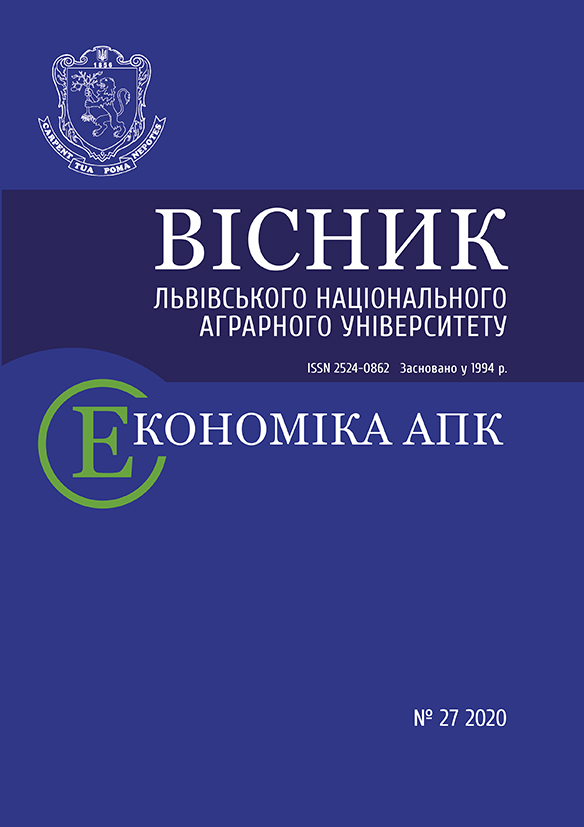Visnyk LNAU: Architecture and Farm Building 2021 №22: 80-85
SPIRITUAL AND ARTISTIC-SPATIAL ASPECTS OF DESIGNING INSTITUTIONS OF WALDORF PEDAGOGY
R. Kuntsli, Doctor of Art Criticism
ORCID ID: 0000-0001-5234-4903
A. Stepanyuk, Candidate of Architectural Sciences
ORCID ID: 0000-0001-5030-5724
Lviv National Agrarian University
https://doi.org/10.31734/architecture2021.22.080
Annotation
Questions about kindergartens and upbringing arose when there were economic demands. The upbringing of children gave rise to the science of pedagogy (Greek παιδαγωγική «art of upbringing» from παῖς «boy» → παιδος «teenager» + ἄγω «lead») – the science of education and training of man, especially in childhood and adolescence. The world knows many attempts to improve and reform approaches to raising children. Well-known teachers Johann Pestalozzi, Friedrich Froebel, Celestine Freynet, Maria Montessori, Janusz Korczak, etc. tried to take into account the needs, characters and physiology of the child in their pedagogical approaches. At the beginning of the XX century, such teachers as A. Makarenko, V. Sukhomlynsky, F. Frebel, M. Montessori paid attention to the impact of the environment on human development and education. The modern information and technological environment leaves its mark on a person, in particular on his emotional state and consciousness, as well as on the formation of the child as a person. In such conditions, it is important to combine the educational process with the appropriate spatial environment.
Today, the world-famous educator, architect, who involved the spatial environment in the educational process (spiritual, physical (somatic), is Rudolf Steiner. His Waldorf pedagogy is based on the anthroposophical concept of human development as a holistic interaction of physical, mental and spiritual factors. Three human monads expressed their essence in Steiner's architecture through material – body, form – soul, and color – spirit.
It is anthroposophical philosophy that led R. Steiner to believe that man as the highest value of society is ideally developed and realized only in an ideal anthropogenic environment, where material, shape and color harmonize not only with each other, this harmony can be traced between the same anthropogenic and natural environments and both them to the person.
Key words
Waldorf pedagogy, anthroposophical philosophy, architecture of preschool institutions
Link
- Benevolo L. Die Ursprünge des modernen Städtebaus, Lehren von gestern – Forderungen für morgen, Gütersloh: Bertelsmann Fachverlag, 1971.
- 6. Bräutigam C. Kinder-Garten // Evangelisch-reformierte Kirche in Bayern - Synodalverband XI der Ev.-ref. Kirche. März bis Mai 2019. URL: https://reformiert-sued.de/wp-content/uploads/2019-02.pdf.
- Das Spielzeug im Waldorfkindergarten р. URL: https://www.zuckersuesseaepfel.de/2018/04/spielzeug-im-waldorfkindergarten-waldorf-spielen-kinder.html.
- Erning G. Geschichte des Kindergartens. Band I: Entstehung und Entwicklung der öffentlichen Kleinkindererziehung in Deutschland von den Anfängen bis zur Gegenwart. Freiburg/Breisgau, 1987.
- Goetheanum. Wikipedia. URL: https://ru.wikipedia.org/wiki/%D0%93%D1%91%D1%82%D0%B5%D0%B0%D0%BD%D1%83%D0%BC.
- Korsak K. Education and society – a guide to development. Ridna shkola. 2002. No. 5. P. 7.
- Mercado. URL: https://Www.Mercado.Hamburg/En/Waldorf-Kindergarten/.
- Mironov D. Part 2. What is the Goetheanum talking about? 13 april 2018. URL: http://www.berlogos.ru/article/chast-2-o-chyom-govorit-gyoteanum/.
- Mochner Matthias Human Beings as the Measure of Things: On the architecture of Waldorf schools. URL: https://www.waldorftoday.com/2014/09/human-beings-as-the-measure-of-things-on-the-architecture-of-waldorf-schools/.
- Steiner R. The Hierarchies and the Nature of the Rainbow (Dornach, 4th January, 1924). URL: http://bdn-steiner.ru/modules.php?name=Ga_Book&Id=291&Bid=1.
- Steiner Rudolf Der pädagogische Wert der Menschenerkenntnis und der Kulturwert der Pädagogik. Zehn Vorträge Oosterbeek-Arnheim/Holland, 17. bis 24. Juli 1924 Rudolf Steiner Online archiv. URL: http://anthroposophie.byu.edu 4. Auflage 2010 178 c.
- Waldorf School Ueberlingen. URL: https://waldorfschule-ueberlingen.de/schule/index.html.
- Wilderspin S. Infant education: or, practical remarks on the importance of educating the infant poor, from the age of eighteen months to seven years, containing hints for developing the moral and intellectual powers of children of all classes. London: Simpkin and Marshall, 1829. 324 p. URL: https://babel.hathitrust.org/cgi/pt?id=hvd.32044096982905&view=1up&seq=6.



